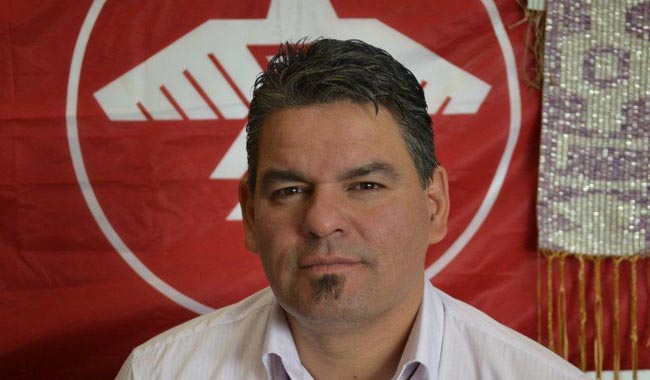
NEWS RELEASE
UNION OF ONTARIO INDIANS
*************************
TORONTO – Key First Nation leaders and officials attended a joint gathering this week between the Rural Ontario Municipalities of Ontario (ROMA) and the Ontario Good Roads Association (OGRA), called “Re-booting Ontario’s Municipal Sector”.
The Chiefs of Ontario Political Confederacy brought key issues to the table in sidebar meetings with Ontario’s Cabinet Ministers; that message was one of a renewed 21st Century focus on Treaties in Ontario.
Energy, land use planning, shared regional planning – these were some of the obvious issues discussed.
Anishinabek Nation’s Lake Huron Regional Grand Chief Isadore Day, Wiindawtegowinini of Serpent River First Nation attended as a key speaker on behalf of the Chiefs of Ontario and carried a critical message about treaties in Ontario.
“As First Nations, we are clear about our message. Ontario’s re-booting of its municipal sector must factor in the critical element of treaties – and it must do this as it reshapes public policy affecting our traditional lands in this province.”
Day stated that Ontarians generally don’t have a grasp of the implications that public policy has on treaties in Ontario.
He said that most don’t know that they are in fact treaty partners, and further don’t know that their treaty rights were given to them as a consequence of treaty.
“First Nations, on the other hand, have rights that are ‘treaty-plus;’ they are those rights that were brought into the treaty because we are the original occupants of this land. Those are called inherent rights and they remain very much intact,” says Day.
He highlights the urgency of getting down to work with Minister of Aboriginal affairs David Zimmer and other relevant ministries on a joint commitment to establish a “jurisdictional think-tank” and a clear plan on an improved working relationship that is based on the Spirit and Intent of the treaties in Ontario referred to as “Polishing the Covenant Chain.”
The Covenant Chain refers to a symbol of strength in the relationship committed by the British Crown to 24 Nations represented in the first treaty entered into as a result of the 1763 Royal Proclamation of Canada.
The Anishinabek Nation established the Union of Ontario Indians as its secretariat in 1949.
The UOI is a political advocate for 39 member communities across Ontario, representing approximately 55,000 people.
The Union of Ontario Indians is the oldest political organization in Ontario and can trace its roots back to the Confederacy of Three Fires, which existed long before European contact.
*************************